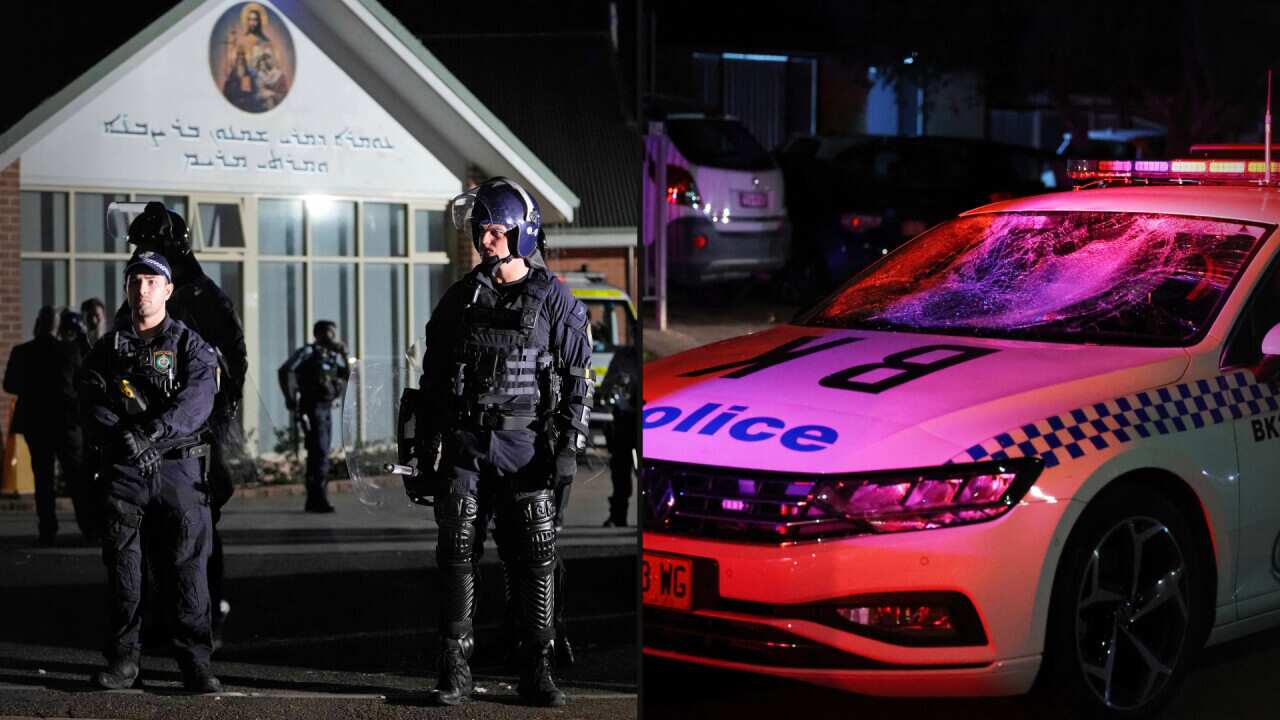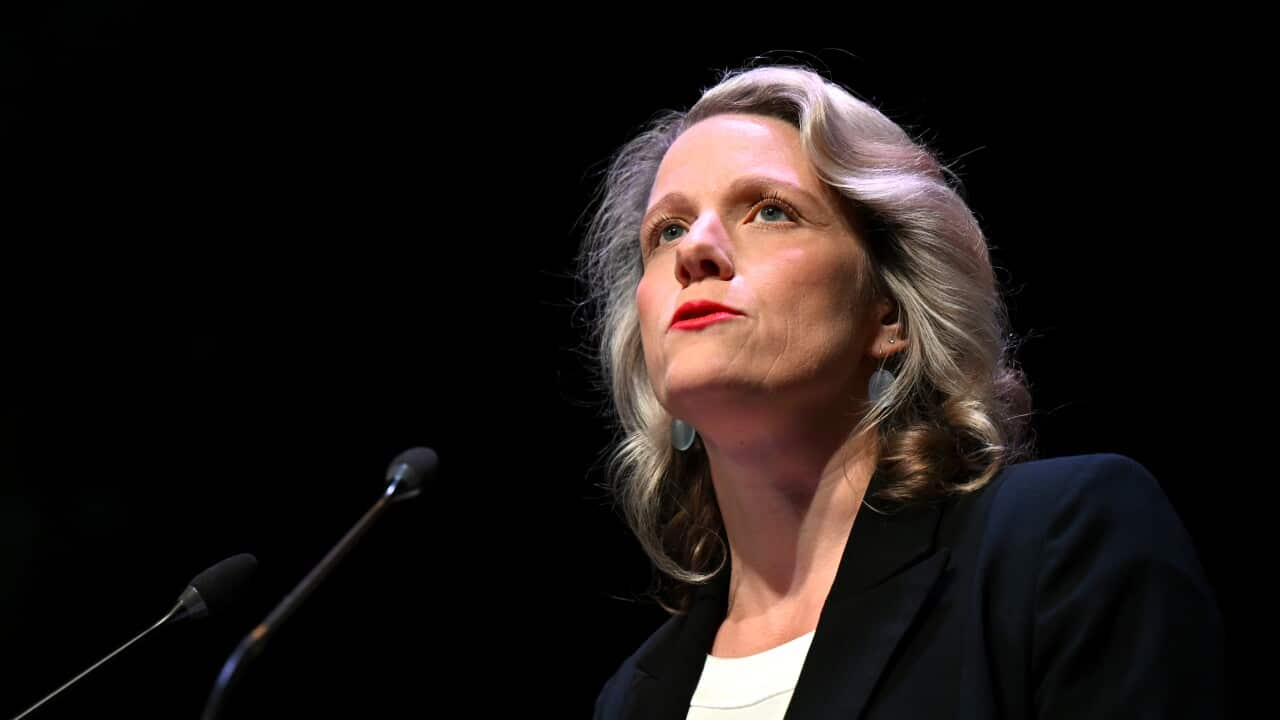Omar Delgado is haunted by the iPhone's ringtone.
“Every time I hear it I freeze. It takes me a minute to realise, ‘OK, I’m not back there, it’s OK,’” he tells SBS World News.
The police officer was one of the first on the scene at the Pulse nightclub massacre in Orlando, Florida, in July 2016. The shooting left 49 people dead and was, at the time, the most deadly mass shooting in United States history.
The gunman, Omar Mateen, was holding hostages in the bathroom when Officer Delgado arrived – he told police he had a bomb. More than a year later, the 45-year-old remembers every detail.
WARNING: Some readers may find some of the content below distressing.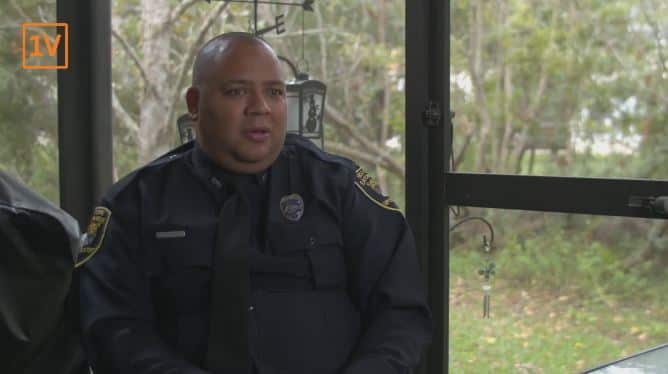

Omar Delgado was one of the first on the scene of the Orlando shooting. (Twitter / @EenVandaag) Source: Twitter / EenVandaag
A nightclub in Orlando
“I can tell you how many bottles were standing at the bar, I can tell you what was playing on the screens, what performers were coming next Friday and where the bodies were laying – I can’t get rid of that,” Officer Delgado says.
But what triggers his memory, again and again, is that universal iPhone ringtone.
For him, that endlessly repeating xylophone melody is the sound of the phones of the dead; scattered across a floor slick with blood and strewn with bodies. It brings back memories of the victims’ phones as they buzz and light up, desperately trying to get the attention of their owners, who will never answer.
“I can see the caller IDs, I can see some phones that said ‘mum’ was calling, ‘dad’ was calling. Their picture was there,” he says.
“You couldn’t stop the phones from ringing.”
They rang until the batteries died; police officers couldn’t touch potential evidence. Officer Delgado was in the room for more than three hours.
The video below shows Officer Delgado and Orlando shooting survivor Brandon Wolf speaking to Dutch TV program EénVandaag in February 2017.
Ruim een half jaar later na het bloedbad in Orlando worstelen Agent Omar Delgado en overlevende Brandon Wolf nog steeds met de aanslag pic.twitter.com/sXWl0bJd0R — EenVandaag (@EenVandaag) February 4, 2017
What is a 'mass shooting'?
Officer Delgado is one of the thousands of people who have survived a mass shooting in the United States.
Typically defined as a shooting, killing or injuring of at least four people, they are disturbingly common in the country. In 2016, Mass Shooting Tracker, an open source database, counted 477 such incidents across the year, which left 606 people dead.
Following , on November 5, 2017, the incident count was at 378, with at least 530 dead. But it is not just mass shooting victims and their families who suffer; there are thousands of survivors who carry scars, both mental and physical, for the rest of their lives.
But it is not just mass shooting victims and their families who suffer; there are thousands of survivors who carry scars, both mental and physical, for the rest of their lives.

Source: Gun Violence Archive
It has been more than a year since the Orlando massacre and Officer Delgado now suffers from depression, anxiety, and post-traumatic stress disorder. Research shows up to 25 per cent of mass shooting survivors suffer PTSD one year after a traumatic event.
Every night Officer Delgado relives the attack. He wakes up in a sweat, sometimes screaming. It is the same nightmare every time:
“I’m inside the club and hearing him shooting at us while we’re pulling some people out and, yelling at everyone ‘get down get down get down he’s shooting he’s shooting.’”
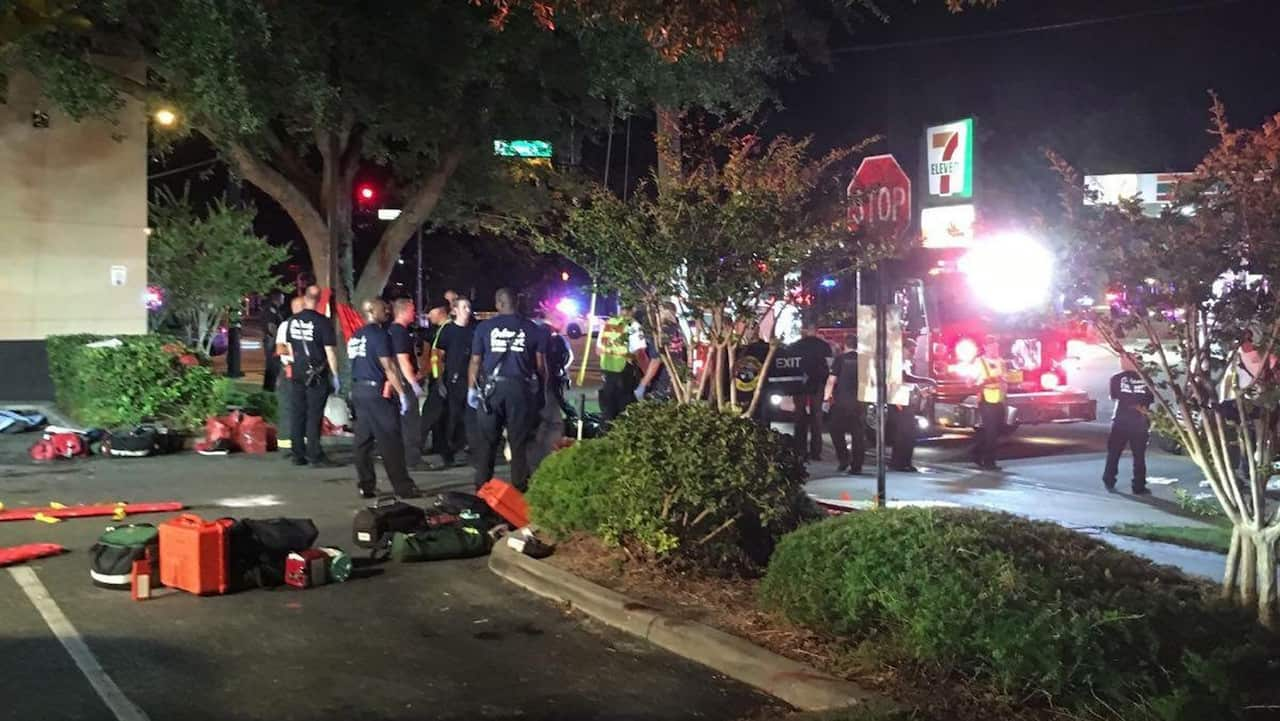
The aftermath of the shooting at Pulse Nightclub in Orlando on June 12, 2016. Source: UNIVISION FLORIDA CENTRAL
Every night he is filled with confusion – he doesn’t know how many shooters there are, where they are, and if he is going to make it out alive.
“It’s kinda like the movie Groundhog Day, it repeats over and over,” he says.
“It’s intense, it’s happening live, and still looping.”
'You’re no longer the same person'
In the aftermath of the shooting, Officer Delgado was interviewed by top CNN host Anderson Cooper. He was profiled in the New York Times and USA Today. But as the media coverage faded, his pain remained just as present.
Patricia Wilson, a senior specialist at the National Center for PTSD in Hawaii, says seeing others moving on can exacerbate the condition.
“From the perspective of someone who has been involved with something like that, to see the rest of the world move on can prompt a lot of disillusionment,” she tells SBS World News.
“Most people are going to experience some post-traumatic stress reactions – you might have nightmares and flashbacks, you might have intrusive thoughts – it doesn’t reach the threshold of PTSD unless it’s significant stress, or you become significantly impaired.”
For Officer Delgado, it’s both.
“I don’t go out anymore, I don’t hang out with friends, I’d rather be home alone because I know I’m at peace and I’m safe,” he says.
Restaurants make him nervous; his imagination is gripped by worst-case scenarios. He’s anxious about any type of crowd.
Officer Delgado's stress is compounded by a profound guilt over his inability to now be there for his three children, and mounting medical bills for sessions with psychologists and psychiatrists.
“It’s challenging trying to realise that you’re no longer the same person that you were before,” he says.
“No matter how hard you try to become that person again, it just doesn’t happen.”
When asked if things have become any easier over time, Officer Delgado says he just can’t get past what happened:
“It’s like I’m stuck in purgatory.”
An island in Norway
For Ylva Schwenke it has been six years.
She remembers lying by the shore of Lake Tyri in Norway on an overcast day; July 22, 2011. Ms Schwenke, who was 14 at the time, could barely see anything; she had just lost her glasses scrambling down a hill.
Minutes earlier, self-described militant nationalist had opened fire at a Labour Party youth camp she was attending on the island of Utoya. When Ms Schwenke first heard bullets, she thought they were fireworks. When others said people were being shot, she thought they were kidding. Seconds later, she saw teenagers being shot right in front of her. There was a lot of screaming. There was a lot of blood.
When Ms Schwenke first heard bullets, she thought they were fireworks. When others said people were being shot, she thought they were kidding. Seconds later, she saw teenagers being shot right in front of her. There was a lot of screaming. There was a lot of blood.

Ylva Schwenke remembers scrambling down a hill after Anders Breivik began shooting. Source: SBS Dateline
“I’m really glad I lost my glasses,” Ms Schwenke tells SBS World News.
'I just waited for the light'
Ms Schwenke herself had been shot - five times. First in the shoulder, then twice in the stomach, then once in each leg. As she lay on the shoreline covered in blood, she was certain she would die.
“I was just kind of waiting for it to happen, so I closed my eyes and just waited for the darkness or the light or anything,” she says.
It was over an hour before rescuers would reach her. In that time, Breivik stalked and shot 67 people dead on the island. One teenager died falling from a cliff trying to escape, another drowned attempting to flee. With another seven killed by Breivik in Oslo earlier that day, the total death toll reached 77.
Weird things stand out in Ms Schwenke’s memory about the massacre. She remembers medical responders cutting open her favourite bra as they treated her wounds, and thinking it was a shame she never told a boy in her class that he was a total douchebag.
“I was very sad because I might not get to see the last Harry Potter movie,” she says.
But unlike Officer Delgado, Ms Schwenke’s memory of that day is incomplete.
“I know that I have forgotten things; my brain has just removed them from my memory because they were so painful,” she says. The gaps still tug at her. She can’t remember exactly who she was with at times or where exactly where she was.
The gaps still tug at her. She can’t remember exactly who she was with at times or where exactly where she was.

The Norwegian island of Utoya where the mass shooting took place in July 2011. Source: TORE MEEK/AFP/Getty Images
“I have one friend who I know I saw die, but I don’t remember that anymore,” she says.
“I probably think it’s best that I don’t remember to be honest, but a little part of me wants to. Just to know, you know?”
She does remember one very calm boy telling her everything was going to be fine. She spoke with him about it afterwards; he didn’t remember it at all.
Telling and retelling the story
Ms Schwenke, now 21, carries large scars on her shoulder, stomach and legs. Breivik used bullets designed to expand on impact and cause maximum injury.
She has spent six years telling and retelling her story.
The video below features an extended interview with Ylva Schwenke from a 2013 episode of Dateline.
It started with her family, nurses and classmates, now it is children who ask about the scars, or drunken people who come up to her at parties. She understands their curiosity and, if needed, can tell the story with a smile.
For her, it is a way of processing what happened. She has a short version, a long version, a sanitized version for children, and a version with comic relief. She tells them about the random things that went through her mind, and about how rescuers awkwardly put her in the boat with her face directly in boy’s crotch.
“I’ve made a lot of people laugh while telling the story because it’s so crazy,” she says.
When Ms Schwenke left the hospital she was told to expect panic attacks and a breakdown.
“I’m still waiting,” she says.
The closest she came was when she had three other survivors over to her apartment and fireworks suddenly went off outside:
“All of us just panicked. It was horrible.”
A mall in Tucson
On January 8, 2011, Mary Reed was at a suburban shopping mall with her husband and two children in Tucson, Arizona. They were there to get a photo with their local , who was holding a ‘Congress in your Corner’ event.
The family heard a bang as Jared Loughner, a 22-year-old suffering from paranoid schizophrenia, shot the Congresswoman in the head. Loughner then turned his weapon on those in the line.
“When the shooting began I threw my daughter against a concrete wall and covered her with my body,” Ms Reed, 59, tells SBS World News.
Ms Reed was shot three times. A bullet remains lodged in a bundle of nerves near her spine.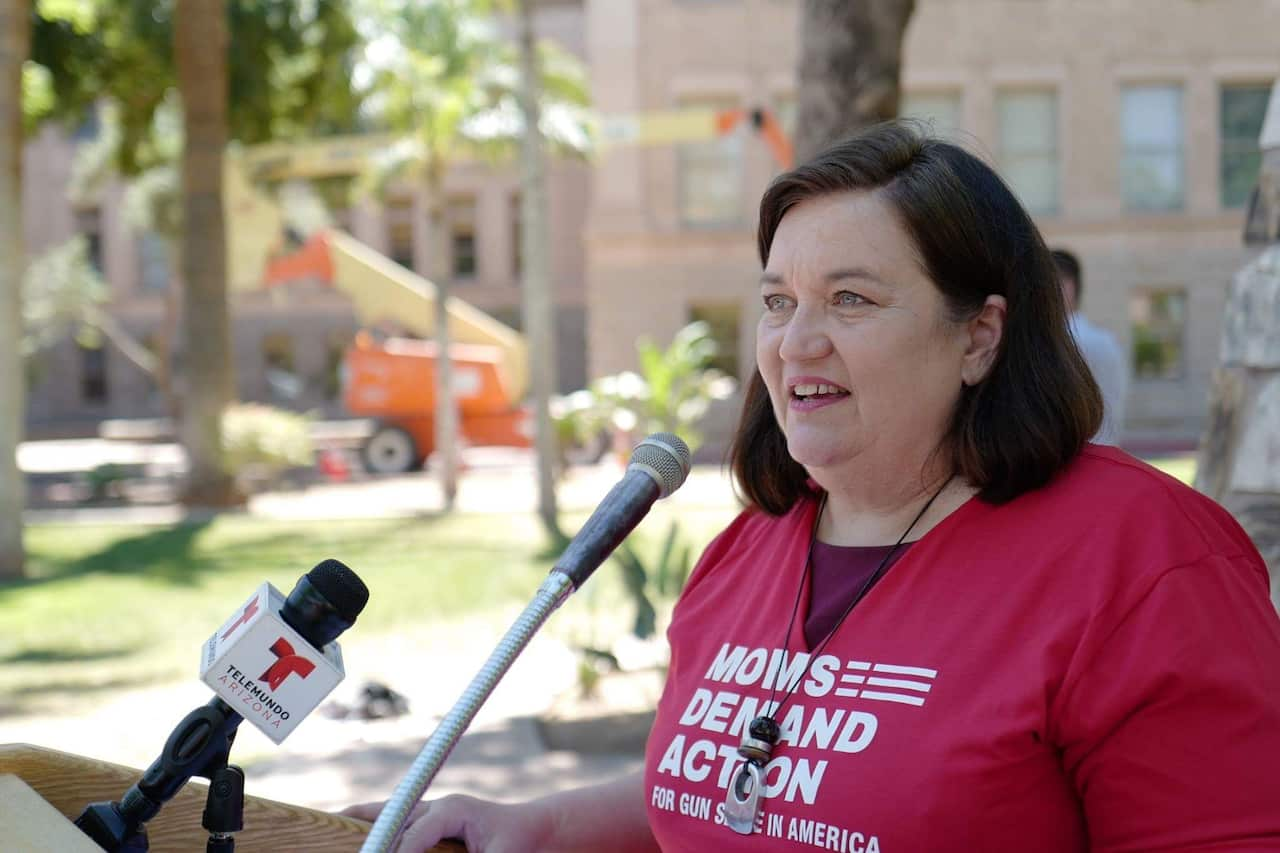 The whole ordeal lasted barely 20 seconds, but it was long enough for Loughner to kill six people, including a nine-year-old girl. Despite a serious head wound, Congresswoman Giffords survived.
The whole ordeal lasted barely 20 seconds, but it was long enough for Loughner to kill six people, including a nine-year-old girl. Despite a serious head wound, Congresswoman Giffords survived.

Mary Reed was shot three times. Source: Supplied
Ms Reed’s 13-year-old son came over to find his mother had been shot. Blood was everywhere.
“There’s my 13-year-old son picking brains and flesh out of my daughter’s hair,” she remembers with a mix of anger and incredulity. For years after the attack, her injuries caused daily chronic pain. Her son was also diagnosed with PTSD. But in a world where the impact of mass shootings is measured by its fatalities, she feels the family’s suffering is too frequently dismissed.
For years after the attack, her injuries caused daily chronic pain. Her son was also diagnosed with PTSD. But in a world where the impact of mass shootings is measured by its fatalities, she feels the family’s suffering is too frequently dismissed.

Emergency workers at the scene in Tuscon on January 8, 2011 where Congresswoman Gabby Giffords and others were shot. Source: AP
“I count like half [a victim]” Ms Reed says.
“And my two children, who had a gun pointed at them - they were 13 and 17 at the time – they don’t count at all.”
“It’s an odd accounting that we have.”
To this day, when a loud noise is heard nearby, the whole family jumps.
'A community wound'
Doctor Wilson, who has researched psychological trauma in first responders, veterans and 9/11 survivors, says mass shootings are especially traumatic because they are so unexpected, so out of place.
“People are completely unprepared for it and untrained – it’s a total shock, they have absolutely no bracing,” Dr Wilson says.
“All I did was go to my local grocery store,” Ms Reed says.
“This is Orlando, this is Disneyworld,” Officer Delgado says several times when reliving the events in the nightclub.
The audio below features Mary Reed and her daughter Emma McMahon describing their experiences. It originally aired on January 8, 2016, on NPR’s Morning Edition.
Stephen Benning, a clinical psychologist at the University of Nevada, is running a long-term study into the psychological impact of the which left 58 people dead.
“Unlike many other traumas, these sort of massive events appear to affect everyone in the area,” he says.
The scale of the deaths and injuries, the number of direct witnesses, the media spotlight, the suddenness and randomness of the attack; mass shootings are uniquely terrifying.
“Even though I wasn’t there, it felt like this veneer of safety and this notion of imperviousness in our community had been ripped asunder,” Dr Benning says.
“It feels like a community wound.” The impact can be more intense when minorities are targeted, such as the , South Carolina, and the Orlando shooting, which took place at a gay nightclub.
The impact can be more intense when minorities are targeted, such as the , South Carolina, and the Orlando shooting, which took place at a gay nightclub.

Jose Ramirez, who survived the Orlando mass shooting on June 12, 2016, visits the scene one year on. Source: Joe Raedle/Getty Images
“He didn’t go to any old club, he specifically went to a gay club,” says Perry Halkitis, dean of the Rutgers School of Public Health in New Jersey and author of a study into the effects of the attack on LGBT+ Americans.
“When you attack a specific population, be it a black church in South Carolina or an LGBT nightclub like Pulse, it is saying 'I hate you – specifically you,'" Dr Halkitis says.
“When there are mass shootings like that, they’re a real personal affront to people and communities, and it just heightens vulnerability.”
'Post-traumatic growth'
Following a shooting, survivors often suffer from an intense feeling of helplessness and vulnerability. Ms Reed worked through it by attending every court date. Ms Schwenke devoured media reports, taking a special interest in who Breivik was and why he did it.
“Some people want to hear everything they can about the shooting – it gives them a sense of control,” Dr Wilson says.
“For some people, it can help, but for others, it can lead to obsession.”
Dr Wilson also stresses that despite the horror of mass shootings, the experience can be transformative in positive ways – a phenomenon known as ‘post-traumatic growth’.
“We often only hear about the negative reactions, but it’s important to remember there’s a full range,” she says.
Survivors re-evaluate their priorities or feel compelled to make something positive come from their experiences. Some write books, some create foundations, some become advocates against gun violence.
“Generally what we find is that people who move into the realm of post-traumatic growth are some of the most strongly affected,” Dr Wilson says.
For Ms Schwenke, it is the death of three close friends that hurts the most, but it has driven her to make the most of life.
“I’m older than two of my friends when they died. Thinking about all the things that they could have done that they never got to do because of this – that’s the worst thing,” she says.
The 21-year-old has studied in England, Argentina and France as well as spending four months in India.
“The whole experience has made me feel like I have to do what I want to do.”
For Ms Reed, the shooting has transformed her career. The former primary school "room-mom" (classroom assistant) is now a victim’s advocate with her local police department as well as an advocate for the nation's largest gun control lobby, movement Everytown for Gun Safety.
“He [Loughner] had his gun pointed at my head, so this is a gift of time that I have right now,” she says.
“That sounds like a platitude but I don’t know how to frame it, I don’t know how to sound intelligent about it.”
The native Texan is a gun owner herself – she owned the same model Glock handgun that she was shot with – but says that since the shooting she has become “less ignorant” about gun laws.
“We in the US have an irrational adoration and affection for these cold metal objects that are designed to kill,” she says.
Gun control advocates have recruited hundreds of survivors to lobby local officials and members of Congress around the US – they have powerful stories which are difficult to dismiss.
But Ms Reed’s advocacy has come with a dark side.
A pro-gun advocate once stood with a black military-style rifle aimed directly at her while she was speaking at a gun control event. A conspiracy theory website argued that Ms Reed, her daughter and other victims were actors, part of a ‘false flag’ hoax by the government.
“I always knew there were cesspools of American culture, I just never knew the depths of it,” Ms Reed says.
And while Ms Reed and Ms Schwenke have moved past the worst of their trauma, Officer Delgado is still stuck – haunted by that ringtone and a horrific, recurring nightmare.
He has started getting into photography: “what I view in my viewfinder is something I can control,” he says, and still has hope for the future after a friend who was a 9/11 first responder successfully worked her way through years of PTSD.
His ongoing friendship with Angel Colon – a man he rescued from the club – is also a great source of strength, as is a letter he received in the weeks following the shooting.
It came from Anne Leigh, an Australian retiree from Dorrigo, a town in northern New South Wales with a population of around 1000. She had seen his story on the news and wanted to thank him for his service.
It brings him some measure of comfort to know he did some good that night.
“Light always overcomes darkness,” Ms Leigh wrote. “Who knows how far your inspiration might reach?”
Officer Delgado shows SBS World News the letter.
“Amazing,” he says.




